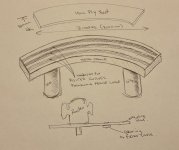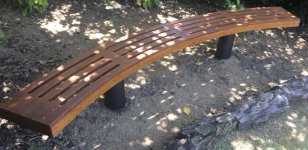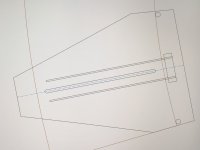Acrobat
Member
- Joined
- Jun 30, 2008
- Messages
- 471
Hi, a while ago the local council were tossing these large seats away as the wood was rotten and the seats were in disrepair having been in a local park for years. I replaced the timber with ply and routed the gaps to follow the seat frame curves by hand as best I could. I am hoping the brains trust here can point me in the direction of a router jig with a bearing and extendable rod so I can adjust the curve as required.
Here’s a sketch of what I am doing and thinking of regarding a jig.
Here’s a sketch of what I am doing and thinking of regarding a jig.



